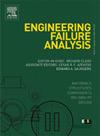Optimal intensity measures for probabilistic seismic demand modeling of single-domed historical masonry buildings
IF 4.4
2区 工程技术
Q1 ENGINEERING, MECHANICAL
引用次数: 0
Abstract
This study aims to identify the optimal intensity measures for use in probabilistic seismic demand models for single-domed historical masonry buildings. Developing a probabilistic seismic demand model that describes the relationship between strong ground motion intensity measures and engineering demand parameters is critical in the performance-based earthquake engineering framework. To this end, a methodology is presented for selecting optimal intensity measures based on correlation, efficiency, practicality, proficiency, and sufficiency criteria. The 38 intensity measures commonly used in seismic vulnerability and risk assessments are categorized as follows: (i) earthquake-based, (ii) structure-based, (iii) event-based, and (iv) compound-based. Shear Stress, Normal Stress, Maximum Normal Strain, and Maximum Drift Ratio were used as engineering demand parameters to measure the structural response. In this study, the Elbistan Ulu Mosque, which was damaged after February 6, 2023, Mw7.8 and Mw7.5 Kahramanmaras earthquakes, was selected as a case study to determine the appropriate intensity parameters. For this purpose, response spectrum analyses were conducted on a 3D finite element model of the selected historical masonry structure to assess its response under seismic events. Various probabilistic seismic demand models were developed, and numerous regression analyses were performed between the engineering demand parameter and the intensity measures. After conducting thorough analysis and evaluation, spectral acceleration, spectral displacement, and modified cordova intensity were determined to be the most suitable intensity measure parameters. In addition to these optimal intensity measures, fragility curves were subsequently developed based on other relevant intensity measures, including peak ground acceleration, effective design acceleration, and A95.
求助全文
约1分钟内获得全文
求助全文
来源期刊

Engineering Failure Analysis
工程技术-材料科学:表征与测试
CiteScore
7.70
自引率
20.00%
发文量
956
审稿时长
47 days
期刊介绍:
Engineering Failure Analysis publishes research papers describing the analysis of engineering failures and related studies.
Papers relating to the structure, properties and behaviour of engineering materials are encouraged, particularly those which also involve the detailed application of materials parameters to problems in engineering structures, components and design. In addition to the area of materials engineering, the interacting fields of mechanical, manufacturing, aeronautical, civil, chemical, corrosion and design engineering are considered relevant. Activity should be directed at analysing engineering failures and carrying out research to help reduce the incidences of failures and to extend the operating horizons of engineering materials.
Emphasis is placed on the mechanical properties of materials and their behaviour when influenced by structure, process and environment. Metallic, polymeric, ceramic and natural materials are all included and the application of these materials to real engineering situations should be emphasised. The use of a case-study based approach is also encouraged.
Engineering Failure Analysis provides essential reference material and critical feedback into the design process thereby contributing to the prevention of engineering failures in the future. All submissions will be subject to peer review from leading experts in the field.
 求助内容:
求助内容: 应助结果提醒方式:
应助结果提醒方式:


